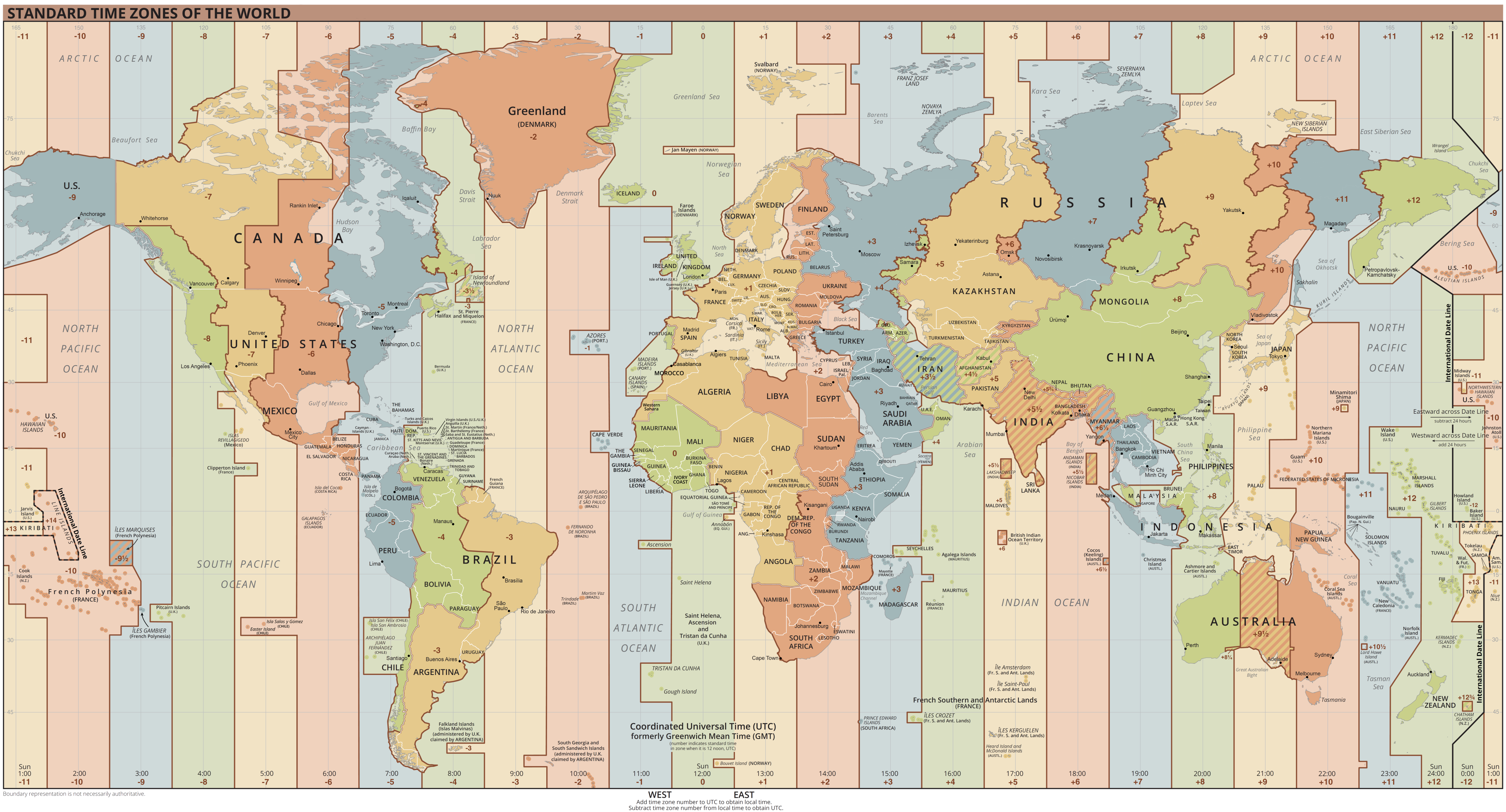
Coordinated Universal Time
Coordinated Universal Time or UTC is the primary time standard globally used to regulate clocks and time. It establishes a reference for the current time, forming the basis for civil time and time zones. UTC facilitates international communication, navigation, scientific research, and commerce.
"UTC" redirects here. For the time zone that lies between UTC−1 and UTC+1, see UTC+00:00. For other uses, see UTC (disambiguation).
UTC has been widely embraced by most countries and is the effective successor to Greenwich Mean Time (GMT) in everyday usage and common applications.[1] In specialized domains such as scientific research, navigation, and timekeeping, other standards such as UT1 and International Atomic Time (TAI) are also used alongside UTC.
UTC is based on TAI, which is a weighted average of hundreds of atomic clocks worldwide. UTC is within about one second of mean solar time at 0° longitude, the currently used prime meridian, and is not adjusted for daylight saving time.
The coordination of time and frequency transmissions around the world began on 1 January 1960. UTC was first officially adopted as a standard in 1963 and "UTC" became the official abbreviation of Coordinated Universal Time in 1967.[2] The current version of UTC is defined by the International Telecommunication Union.
Since adoption, UTC has been adjusted several times, notably adding leap seconds in 1972. Recent years have seen significant developments in the realm of UTC, particularly in discussions about eliminating leap seconds from the timekeeping system because leap seconds occasionally disrupt timekeeping systems worldwide. The General Conference on Weights and Measures adopted a resolution to alter UTC with a new system that would eliminate leap seconds by 2035.[3]
Uses[edit]
Time zones around the world are expressed using positive or negative offsets from UTC, as in the list of time zones by UTC offset.
The westernmost time zone uses UTC−12, being twelve hours behind UTC; the easternmost time zone uses UTC+14, being fourteen hours ahead of UTC. In 1995, the island nation of Kiribati moved those of its atolls in the Line Islands from UTC−10 to UTC+14 so that Kiribati would all be on the same day.
UTC is used in many Internet and World Wide Web standards. The Network Time Protocol (NTP), designed to synchronise the clocks of computers over the Internet, transmits time information from the UTC system.[7] If only milliseconds precision is needed, clients can obtain the current UTC from a number of official internet UTC servers. For sub-microsecond precision, clients can obtain the time from satellite signals.
UTC is also the time standard used in aviation,[8] e.g. for flight plans and air traffic control. In this context it is frequently referred to as Zulu time, as described below. Weather forecasts and maps all use UTC to avoid confusion about time zones and daylight saving time. The International Space Station also uses UTC as a time standard.
Amateur radio operators often schedule their radio contacts in UTC, because transmissions on some frequencies can be picked up in many time zones.[9]